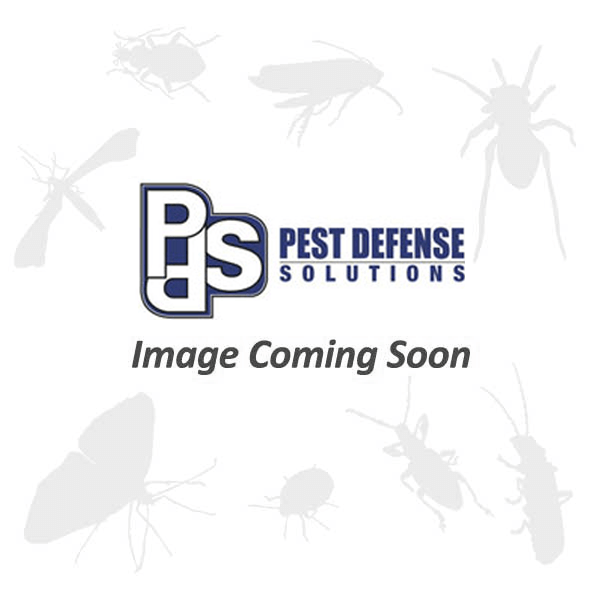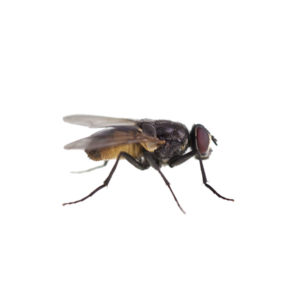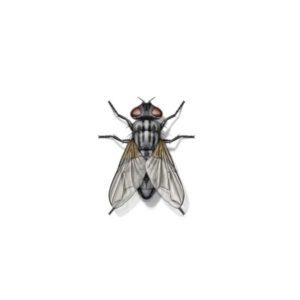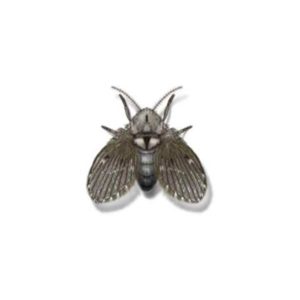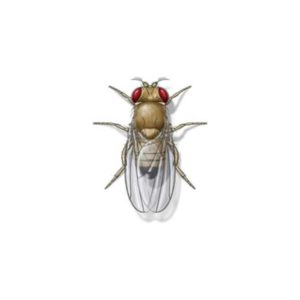Garbage Fly Identification
Also known as house flies, garbage flies can be easily identified by the four long stripes on top of their middle body region. They do not have the ability to bite and instead have a mouth more suited for sponging up liquid food. Female flies are typically larger than the male and have a visibly wider distance between their red-colored eyes. Garbage flies have gray and slightly yellow bodies as well as an upward bend in one of the wing veins.
Garbage Fly Life Cycle and Behavior
Garbage flies lay eggs in decaying matter, with one of the preferred breeding mediums being horse manure. Eggs hatch quickly and maggots emerge to feed on the material in which they were born until they eventually emerge from their pupal cases as adults. The entire life cycle can take as little as one week but more often lasts three weeks.
While they typically ingest liquid food, garbage flies are also able to regurgitate saliva on solid food for easier ingestion. Because of their constant feeding and excreting behaviors, they require a consistent source of water. Although garbage flies are considered to play an important role in breaking down decaying or dead matter, they are nonetheless unsanitary and a serious pest.
Are Garbage Flies Dangerous?
Garbage flies are considered a nuisance due to their close proximity to humans. In some cases, these flies can carry a variety of harmful diseases to humans and animals alike. Because they breed and feed in waste, they have the ability to pick up bacteria, viruses, and fungi and transfer or spread them by contaminating food and water they come into contact with. In serious cases, people have experienced food poisoning and even tuberculosis linked to garbage fly infestations.
Garbage Fly Management
When it comes to garbage fly control, exclusion, sanitation, and non-chemical as well as chemical methods have been found helpful.
- Exclusion: By ensuring you have tight-fitting screens and windows, you can limit indoor access to house flies. Covering any openings with caulk can help ensure you have a sealed home.
- Sanitation: Keeping a clean home and taking your garbage out regularly can help keep garbage flies outside.
- Non-chemical techniques: Sticky fly traps, swatters, and light traps are all proven methods to help eliminate flies that have already found their way inside.
- Chemical method: Applying pesticides outdoors has been known to provide relief from fly infestations.
If the garbage fly infestation has reached an untreatable level, it is always best to contact a professional for guidance.
Need help with garbage flies?
We'll call you! Leave your information below.

